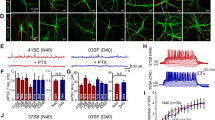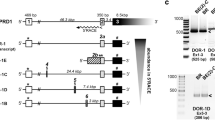Abstract
A quarter of the human population with European background carries at least one allele of the OPRD1 gene that encodes the delta opioid receptor with cysteine at the amino acid position 27 (hδORCys27) instead of the evolutionary conserved phenylalanine (hδORPhe27). The two variants have indistinguishable pharmacological properties but, importantly, hδORCys27 differs from hδORPhe27 in having low maturation efficiency, lower stability at the cell surface and pronounced intracellular location. Both variants were previously shown to interact with the Sarco(endo)plasmic reticulum Ca2+ ATPase (SERCA) 2b in the early phase of their biosynthesis. We analyzed by pulse-chase assays, whether cellular signaling can affect hδORCys27 maturation. Neither activation of the receptor by a δOR-specific agonist Leu-enkephalin, induction of intracellular calcium (Ca2+) release by ATP nor the direct stimulation of SERCA 2b by protein kinase C activation affected receptor maturation in HEK-293 cells. No signaling-mediated regulation of receptor maturation could therefore be demonstrated. Instead, we found by using single cell Ca2+ measurements that over-expression of hδORCys27, but not hδORPhe27, compromised ATP-induced intracellular Ca2+-signaling. Furthermore, hδORCys27 precursors showed slower dissociation from SERCA2b and hδORCys27 expression caused down-regulation of the homocysteine-inducible endoplasmic reticulum-resident ubiquitin domain-like member 1 protein (HERP). We suggest that aging individuals with at least one hδORCys27 encoding allele might have lowered threshold for Ca2+ dysregulation in neurons expressing hδOR.





Similar content being viewed by others
References
Waldhoer M, Bartlett SE, Whistler JL (2004) Opioid receptors. Annu Rev Biochem 73:953–990
Ni Y, Zhao X, Bao G, Zou L, Teng L, Wang Z, Song M, Xiong J, Bai Y, Pei G (2006) Activation of beta2-adrenergic receptor stimulates gamma-secretase activity and accelerates amyloid plaque formation. Nat Med 12:1390–1396
Teng L, Zhao J, Wang F, Ma L, Pei G (2010) A GPCR/secretase complex regulates beta- and gamma-secretase specificity for Abeta production and contributes to AD pathogenesis. Cell Res 20:138–153
Gelernter J, Kranzler HR (2000) Variant detection at the delta opioid receptor (OPRD1) locus and population genetics of a novel variant affecting protein sequence. Hum Genet 107:86–88
Leskelä TT, Markkanen PM, Alahuhta IA, Tuusa JT, Petäjä-Repo UE (2009) Phe27Cys polymorphism alters the maturation and subcellular localization of the human delta opioid receptor. Traffic 10:116–129
Petäjä-Repo UE, Hogue M, Bhalla S, Laperriere A, Morello JP, Bouvier M (2002) Ligands act as pharmacological chaperones and increase the efficiency of delta opioid receptor maturation. EMBO J 21:1628–1637
Tuusa JT, Markkanen PM, Apaja PM, Hakalahti AE, Petäjä-Repo UE (2007) The endoplasmic reticulum Ca2+-pump SERCA2b interacts with G protein-coupled receptors and enhances their expression at the cell surface. J Mol Biol 371:622–638
Tuusa JT, Leskelä TT, Petäjä-Repo UE (2010) Human delta opioid receptor biogenesis is regulated via interactions with SERCA2b and calnexin. FEBS J 277:2815–2829
MacLennan DH, Kranias EG (2003) Phospholamban: a crucial regulator of cardiac contractility. Nat Rev Mol Cell Biol 4:566–577
Muallem S, Beeker TG, Fimmel CJ (1987) Activation of the endoplasmic reticulum Ca2 + pump of pancreatic acini by Ca2+ mobilizing hormones. Biochem Biophys Res Commun 149:213–220
Ulianich L, Elia MG, Treglia AS, Muscella A, Di Jeso B, Storelli C, Marsigliante S (2006) The sarcoplasmic-endoplasmic reticulum Ca2+ ATPase 2b regulates the Ca2+ transients elicited by P2Y2 activation in PC Cl3 thyroid cells. J Endocrinol 190:641–649
Law PY, Wong YH, Loh HH (2000) Molecular mechanisms and regulation of opioid receptor signaling. Annu Rev Pharmacol Toxicol 40:389–430
Leskelä TT, Markkanen PM, Pietilä EM, Tuusa JT, Petäjä-Repo UE (2007) Opioid receptor pharmacological chaperones act by binding and stabilizing newly synthesized receptors in the endoplasmic reticulum. J Biol Chem 282:23171–23183
Yano K, Petersen OH, Tepikin AV (2004) Dual sensitivity of sarcoplasmic/endoplasmic Ca2+-ATPase to cytosolic and endoplasmic reticulum Ca2+ as a mechanism of modulating cytosolic Ca2+ oscillations. Biochem J 383:353–360
Kelly E, Bailey CP, Henderson G (2008) Agonist-selective mechanisms of GPCR desensitization. Br J Pharmacol 153(Suppl 1):S379–S388
Ma MC, Qian H, Ghassemi F, Zhao P, Xia Y (2005) Oxygen-sensitive {delta}-opioid receptor-regulated survival and death signals: novel insights into neuronal preconditioning and protection. J Biol Chem 280:16208–16218
Canals M, Jenkins L, Kellett E, Milligan G (2006) Up-regulation of the angiotensin II type 1 receptor by the MAS proto-oncogene is due to constitutive activation of Gq/G11 by MAS. J Biol Chem 281:16757–16767
Usachev YM, Marsh AJ, Johanns TM, Lemke MM, Thayer SA (2006) Activation of protein kinase C in sensory neurons accelerates Ca2+ uptake into the endoplasmic reticulum. J Neurosci 26:311–318
Roderick HL, Lechleiter JD, Camacho P (2000) Cytosolic phosphorylation of calnexin controls intracellular Ca(2+) oscillations via an interaction with SERCA2b. J Cell Biol 149:1235–1248
Chen BC, Lin WW (1999) PKCbetaI mediates the inhibition of P2Y receptor-induced inositol phosphate formation in endothelial cells. Br J Pharmacol 127:1908–1914
Ma Y, Hendershot LM (2004) Herp is dually regulated by both the endoplasmic reticulum stress-specific branch of the unfolded protein response and a branch that is shared with other cellular stress pathways. J Biol Chem 279:13792–13799
Chan SL, Fu W, Zhang P, Cheng A, Lee J, Kokame K, Mattson MP (2004) Herp stabilizes neuronal Ca2+ homeostasis and mitochondrial function during endoplasmic reticulum stress. J Biol Chem 279:28733–28743
Simonin F, Befort K, Gaveriaux-Ruff C, Matthes H, Nappey V, Lannes B, Micheletti G, Kieffer B (1994) The human delta-opioid receptor: genomic organization, cDNA cloning, functional expression, and distribution in human brain. Mol Pharmacol 46:1015–1021
Pietilä EM, Tuusa JT, Apaja PM, Aatsinki JT, Hakalahti AE, Rajaniemi HJ, Petäjä-Repo UE (2005) Inefficient maturation of the rat luteinizing hormone receptor. A putative way to regulate receptor numbers at the cell surface. J Biol Chem 280:26622–26629
Conn PM, Janovick JA, Brothers SP, Knollman PE (2006) ‘Effective inefficiency’: cellular control of protein trafficking as a mechanism of post-translational regulation. J Endocrinol 190:13–16
Schulze A, Standera S, Buerger E, Kikkert M, van Voorden S, Wiertz E, Koning F, Kloetzel PM, Seeger M (2005) The ubiquitin-domain protein HERP forms a complex with components of the endoplasmic reticulum associated degradation pathway. J Mol Biol 354:1021–1027
Green KN, LaFerla FM (2008) Linking calcium to Abeta and Alzheimer’s disease. Neuron 59:190–194
Guerrero-Hernandez A, Dagnino-Acosta A, Verkhratsky A (2010) An intelligent sarco-endoplasmic reticulum Ca(2 +) store: Release and leak channels have differential access to a concealed Ca(2 +) pool. Cell Calcium 48:143–149
Acknowledgments
We are grateful to Tarja Leskelä for cloning of the HA-hδORCys27–pcDNA3 plasmid construct. This study was supported by grants from the Academy of Finland (#127199) and the Sigrid Juselius Foundation (UEP-R). The Finnish Cultural foundation is acknowledged for the grant to J.T.T.
Author information
Authors and Affiliations
Corresponding author
Electronic supplementary material
Below is the link to the electronic supplementary material.
Rights and permissions
About this article
Cite this article
Tuusa, J.T., Petäjä-Repo, U.E. Phe27Cys polymorphism of the human delta opioid receptor predisposes cells to compromised calcium signaling. Mol Cell Biochem 351, 173–181 (2011). https://doi.org/10.1007/s11010-011-0725-5
Received:
Accepted:
Published:
Issue Date:
DOI: https://doi.org/10.1007/s11010-011-0725-5




